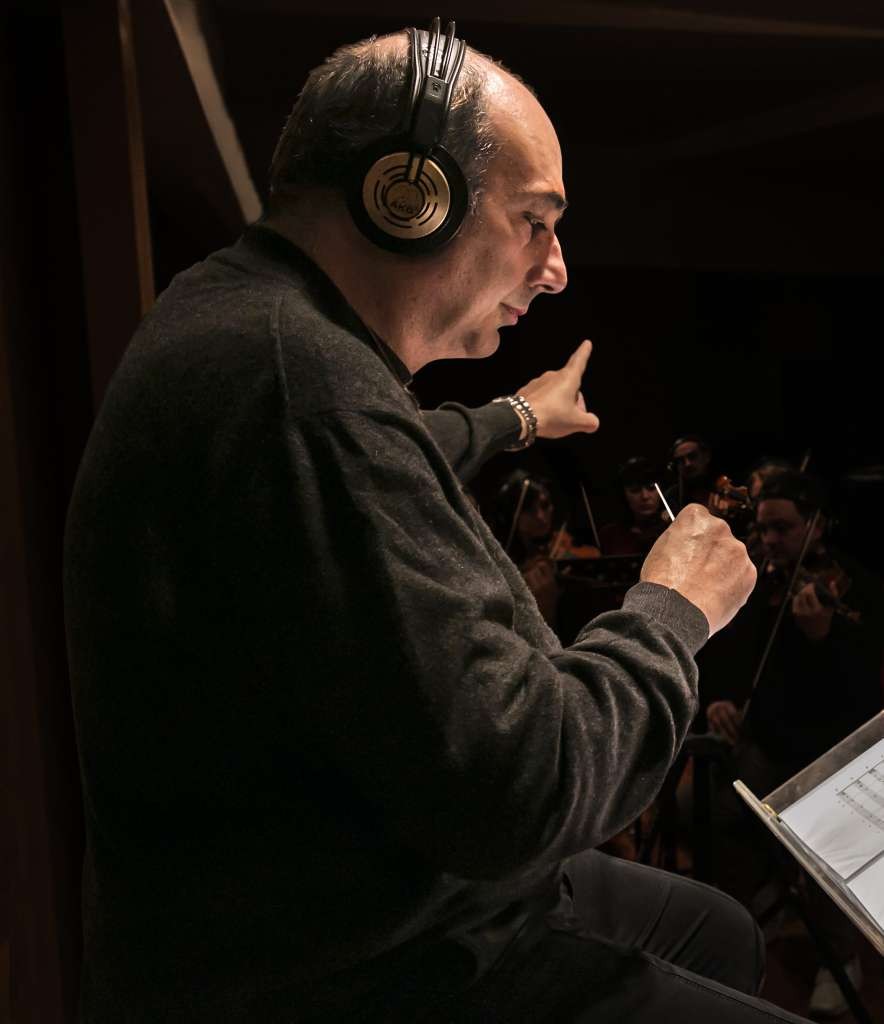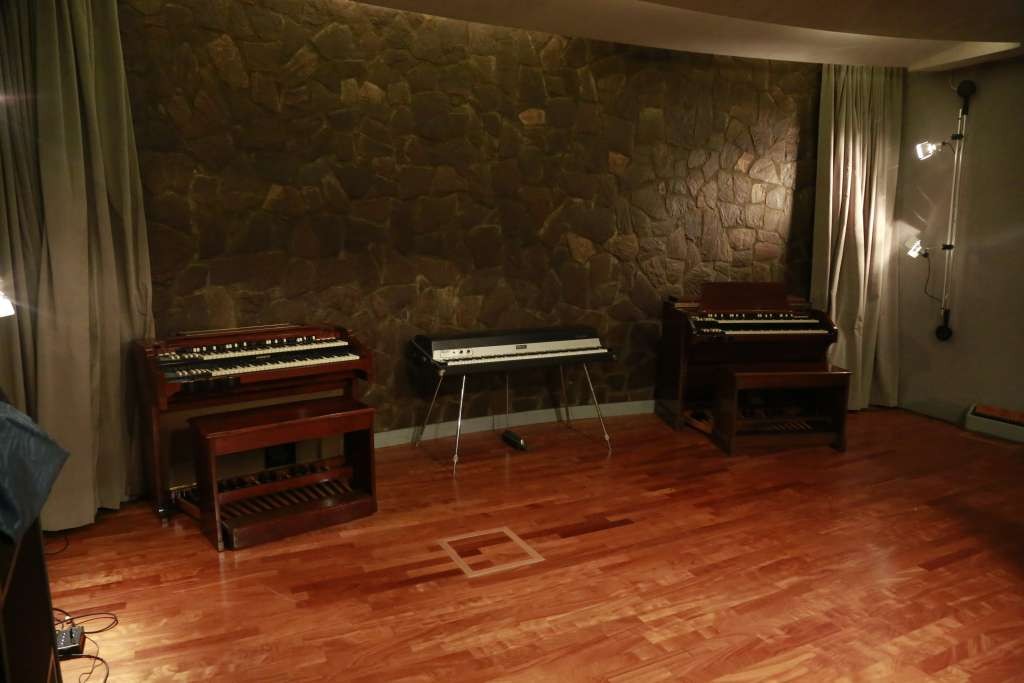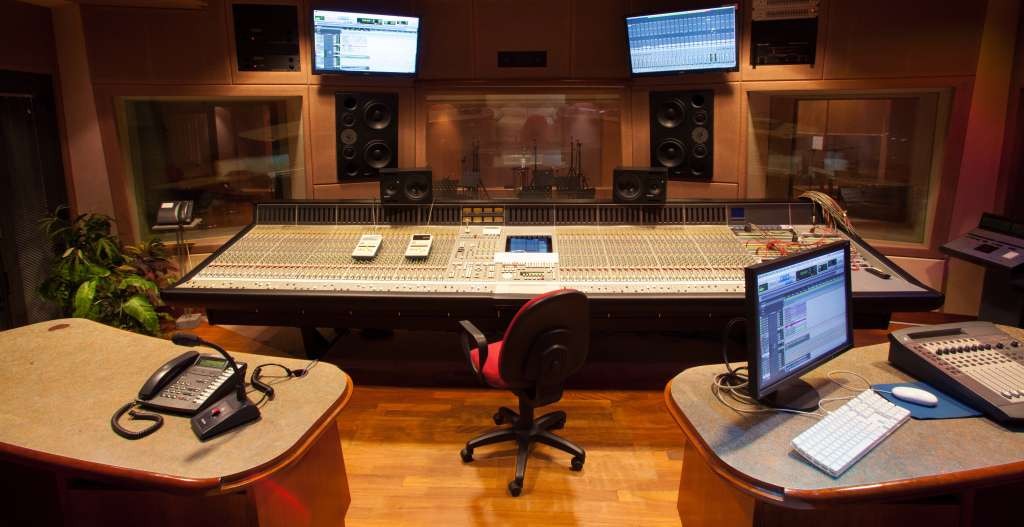Aufnahme, Abmischung und Mastering
Veröffentlicht am 17/05/2023

We recently met Mario Zannini Quirini in what we can consider his natural environment: the Lead Studios.
Mario is a busy musician in many areas. Passionate about sound and sound architectures, he created the first version of Lead Studios in 1982.
Since the early years of his career he collaborated with several important artists of the Italian music scene.
Among these we mention Amedeo Minghi with whom, in 1990, he realized the hit Vattene amore which has quickly become a milestone of Italian pop music.

The current headquarter, in a site of almost 1000 square meters in the center of Rome, was built in 2000.
The goal (in 2000) was to create an aggregation center for musicians and, more generally, artists that would be a reference point for production activities in various fields.
Some events at the turn of the third millennium yielded that this goal was only partially achieved.
The main factors influencing the outcome were:
The digitization of the production process which already at the end of the 90s hinted at the possibility of reducing production costs.
The development of the Internet and of the first channels from which to find low-cost (or even free) musical content.
The global economic crisis which, starting from the effects of the attack on the twin towers in 2001, found its full expression with the banking crisis of 2008.
The combination of lower availability of capital to invest (in all sectors but above all in the entertainment sector) and the decrease in the economic value of music have made it necessary to rethink the direction to take.
The keyword that moved Mario's choices (who in addition to being a quality musician also proves to be a top-level manager) is: diversification.
Already during the construction phase, the new Lead Studios were designed to adapt to the most varied situations.
The area that seemed most promising was that of creating soundtracks.
The cinematographic and television industries of Rome have always been very thriving and the competition was represented, at that time, by a single studio with an environment suitable for the recording of orchestras.
The Studio Orchestra room (more details below) is designed precisely for this purpose and the acoustic of the hall (carefully designed by Mario) is particularly appreciated by musicians and conductors.

The possibility of varying the response (thanks to the presence of different types of surfaces, the use of pear wood - whose resonances are particularly adequate - and the availability of movable panels) then makes the room particularly versatile as it can be configured to enable musical instruments to perform at their best.
This activity is still one of the most important of the studio. The success achieved over the years has also given Mario the possibility of choosing his customers.
The choice favors competence and the ability to operate. He therefore tries to avoid collaborations with high-demanding clients who, however, are not supported by adequate professional and relationship skills.
Mario confesses to us that he found himself, sometimes, working with people of an inadequate level and with exaggerated or, worse, inadequate demands. This is not happening any more.
On the other hand, he cites the experience with Brian May of Queen, who worked for weeks in the studio setting the activity in a full and constructive collaboration mood.
Mario is a musician, composer and conductor. This inevitably leads him to work on production and editing. The area in which he is most comfortable (although not the only one) is Pop music.
The artists with whom he collaborated demonstrate this attitude that Mario tries to feed by working hard and proposing innovative ideas and situations
The Studio Hammond is the place where he realizes his own projects and creates the arrangements for himself or for the artists he collaborates with.

Mario has clear ideas about the quality of the products and the causes of the decay of current production.
It's not the genre that prevents you from making good music. Even the mistreated Trap (for example) can be made with the necessary quality.
Creativity must never be lacking as well as technical and productive support for artists who must always be able to express themselves to the maximum of their abilities.
However, modern music can use styles and figures that go beyond the triplets which, according to Mario, were excessively used - for example - in the vocal parts of the last Sanremo Festival.
Vocal melodies can make use of even more articulated figurations (backbeats, syncopations, dotted notes) with the aim of making the performance interesting and capturing the listener's interest. Someone does it (often abroad) and makes the product much more interesting.
Always with a view to diversifying services, Lead offers dubbing, voice overs, documentary commentary, radio and television advertising with the best voices on the Roman scene.
These are taken, of course, within the vocal booths and rooms at Lead Studios.
Lead is also a record label that follows national and international musical projects of various kinds.
They range from light music (pop, rock, Latin) to classical music through musicals, operetta, jazz, soul and so on up to dance and world music.
The label offers young artists the opportunity to have reliable guidance in all stages of organizing a recording project.
From the arrangement to print and online distribution.
In addition to the Lead Records, MZQ Music Editions promotes and disseminates musical and artistic projects.
Born as a publisher of pop music, it has subsequently expanded its scope of intervention to contemporary classical music as well.
Studio Orchestra has a Control Room and three recording rooms (respectively 150, 32 and 28 m2).
The Control Room uses Console SSL 9000J with Pro Tools system and a perfectly calibrated listening environment.
The SSL 9000J, according to Mario, is the one that best represents the English sound thanks to the fidelity of response, the correctness in the reproduction of the low frequencies and the dynamic section to be preferred to consoles of other brands (although he confesses a predilection for Harrison consoles now practically unobtainable).

With the aim of further improving the performance of the bench, Mario has replaced the complex SSL Power Supply system with an Atomic Instrument device obtaining, in this way, greater reliability and further reduction of the already very low background noise.

Thanks to its features, Studio Orchestra is suitable for recording and mixing any type of music, being also equipped with a Dolby Surround 5.1 monitoring system.
Dolby Atmos is coming (and for this Mario is collaborating with Milk Audio Store). The idea is to use this technology to create a sort of 3-D audio in which each musical instrument finds its correct position within the soundstage.
The Recording Room (live area) is 150 square meters and is designed with variable acoustics with reverberation times ranging from 0.6 to 2.1 sec. It is ideal for orchestral recordings for soundtracks and classical music. The capacity is about 80 elements.
Two other secondary rooms overlook the main recording room (32 and 28 square meters), separated by large windows that allow a direct view of the conductor but maintain adequate acoustic separation.
These two rooms can be used both as comfortable Vocal Booths and to simultaneously record sections of instruments which, while playing together, need absolute audio separation.
The Studio Orchestra allows recordings in Full Analog with the use of Analog and Dolby SR or Analog/Digital multitrack recorders with the use of Analog Preamps and recording on Pro Tools.
The Studio Hammond consists of a 45 square meters control room with Pro Tools and Digital Performer system and is equipped with all the Expanders, Keyboards and Virtual instruments most commonly used for Pop, Dance and Cinematic Discography.
The Recording Room has an area of 57 square meters with variable acoustics and is equipped with various vintage instruments including three awesome Hammonds from '59, '62 and '69, with as many Leslie Tubes and Condensers in excellent condition.
The recording room is suitable for the recording of musical groups, soloists and small orchestral formations.
The Film studio is dedicated to video post-production and Dolby Surround with Dolby Atmos listening coming soon.
The Studio Dj Producers is dedicated to Dance producers and related genres with the possibility of using a 25 square meters recording room which, if necessary, can also be used for Post-Production and dubbing.
The cultural association Arts Factory organizes courses, training workshops and workshops in the field of dubbing, theater, cinema and music.
It makes use of the collaboration of the most quoted and esteemed professionals in Italy.
Thanks to the success of his teaching methodology, he collaborates with dubbing production companies, radio and television productions, theater institutions and universities.
It was recently awarded by ARTI DELLO SPETTACOLO as Best Dubbing School for the 2021-2022 academic year.
As it is now clear, the services available in the Lead Studios encompass the entire musical artistic field.
The interview gave us the opportunity to understand how, working with ambitious goals, high quality and suitably differentiating the offer, one can ride on the crest of the wave even in a difficult period for music and music production.
Let’s close this post with the video of one of the latest productions by Lead Studios and Mario Zannini Quirini (whom we thank for his availability).
Sei dabei und sichere dir 5% Rabatt auf deine nächste Bestellung!

Leerer Wagen